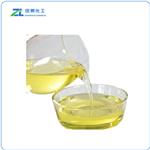- Squalene
-

- $79.00/ kg
-
2024-12-20
- CAS:111-02-4
- Min. Order: 1kg
- Purity: 99%
- Supply Ability: 20ton
- Squalene
-

- $0.00 / 200kg
-
2024-12-18
- CAS:111-02-4
- Min. Order: 200kg
- Purity: 50%,70%,98%
- Supply Ability: 20 tons
- Vegan Squalene
-

- $0.00 / 1kg
-
2024-11-28
- CAS:111-02-4
- Min. Order: 1kg
- Purity: 50% 70% 80%
- Supply Ability: 1000 kg
|
| | Squalene Basic information |
| Product Name: | Squalene | | Synonyms: | trans-Spinacene;SPINACENE;Squalene,2,6,10,15,19,23-Hexamethyl-2,6,10,14,18,22-tetracosahexaene;Squalene, 99+% 100ML;squalcnc;(6E,10E,14E,18E)-2,6,10,15,19,23-Hexamethyltetracosa-2,6,10,14,18,22-hexaene;Nikko Squalane EX;triacontahexaene | | CAS: | 111-02-4 | | MF: | C30H50 | | MW: | 410.72 | | EINECS: | 203-826-1 | | Product Categories: | Biochemistry;Terpenes;Terpenes (Others);Triterpenoids | | Mol File: | 111-02-4.mol |  |
| | Squalene Chemical Properties |
| Melting point | −75 °C(lit.) | | Boiling point | 285 °C25 mm Hg(lit.) | | density | 0.858 g/mL at 25 °C(lit.) | | vapor pressure | 0Pa at 25℃ | | refractive index | n20/D 1.494(lit.) | | Fp | >230 °F | | storage temp. | 2-8°C | | solubility | DMSO : 16.67 mg/mL (40.59 mM; Need ultrasonic)H2O : < 0.1 mg/mL (insoluble) | | form | liquid | | color | light yellow | | Odor | oil, faint odor | | Water Solubility | <0.1 g/100 mL at 19 ºC | | Merck | 14,8768 | | BRN | 1728919 | | LogP | 14.12 at 24℃ | | CAS DataBase Reference | 111-02-4(CAS DataBase Reference) | | NIST Chemistry Reference | 2,6,10,14,18,22-Tetracosahexaene, 2,6,10,15,19,23-hexamethyl-, (all-E)-(111-02-4) | | EPA Substance Registry System | Squalene (111-02-4) |
| Safety Statements | 24/25 | | WGK Germany | 2 | | RTECS | XB6010000 | | F | 8-10-23 | | TSCA | Yes | | HS Code | 29012980 | | Hazardous Substances Data | 111-02-4(Hazardous Substances Data) | | Toxicity | mouse,LD50,intravenous,1800mg/kg (1800mg/kg),Japanese Journal of Cancer Research. Vol. 76, Pg. 1021, 1985. |
| Provider | Language |
|
(all-E)-2,6,10,15,19,23-Hexamethyl-2,6,10,14,18,22-tetracosahexaene
| English |
|
SigmaAldrich
| English |
|
ACROS
| English |
|
ALFA
| English |
| | Squalene Usage And Synthesis |
| Chemical Properties | clear colourless to faint yellow oil | | Uses | cosmetic and pharmaceutical excipient | | Uses | Squalene is a natural triterpene that plays an important role in the synthesis of cholesterol, steroid hormones, and vitamin D in the human body. Squalene is commonly used as a biochemical precursor i
n the preparation of steroids. Squalene is also a natural moisturizer with low acute toxicity and is not significant human skin irritants or sensitizers. | | Uses | Bactericide; intermediate in manufacture of pharmaceuticals, organic coloring materials, rubber chemicals, aromatics and surface active agents. | | Production Methods | Squalene is extracted from shark liver or synthesized from hexaphenyl-1,4-butanediyldiphosphonium dibromide and 6,10-dimethyl-5,9-undecadien-2-one (geranylacetone, industrial intermediate in the vitamin E synthesis). | | Definition | ChEBI: A triterpene consisting of 2,6,10,15,19,23-hexamethyltetracosane having six double bonds at the 2-, 6-, 10-, 14-, 18- and 22-positions with (all-E)-configuration. | | General Description | Clear, slightly yellow liquid with a faint odor. Density 0.858 g / cm3. | | Air & Water Reactions | May become discolored on exposure to air. Insoluble in water. | | Reactivity Profile | (all-E)-2,6,10,15,19,23-Hexamethyl-2,6,10,14,18,22-tetracosahexaene is incompatible with strong oxidizing agents. . | | Health Hazard | ACUTE/CHRONIC HAZARDS: When heated to decomposition (all-E)-2,6,10,15,19,23-Hexamethyl-2,6,10,14,18,22-tetracosahexaene emits toxic fumes of carbon monoxide and carbon dioxide. | | Fire Hazard | (all-E)-2,6,10,15,19,23-Hexamethyl-2,6,10,14,18,22-tetracosahexaene is probably combustible. | | Flammability and Explosibility | Non flammable | | Biochem/physiol Actions | Squalene is a biosynthetic precursor to all steroids. It acts as a cytoprotective agent to normal cells exposed to carcinogens and antitumor agents. Squalene helps in equalizing the blood cholesterol levels. It increases the production of HDL (high density lipoprotein) and the excretion of LDL (low density lipoprotein). This helps in reducing the risk of heart disease and protects the less stable body fats from oxidation. It is also used in treating hypercholesterolemia. Squalene is known to improve the efficiency of cholesterol lowering drugs. It also serves as an antioxidant by preventing the effects of free radical. It protects skin from drying and other environmental conditions such as oxidation, ultraviolet rays and pollutants. Squalene is known to promote wound healing. | | target | COX | STAT | FOXP3 | Nrf2 | SOD | GPx |
| | Squalene Preparation Products And Raw materials |
| Raw materials | (2S)-1-(3-Acetylthio-2-methyl-1-oxopropyl)-L-proline-->Squalene-->Oils, shark-liver-->Squalane | | Preparation Products | Cyclohexane, 1,1-dimethyl-3-methylene-2-[(3E,7E,11E)-3,8,12,16-tetramethyl-3,7,11,15-heptadecatetraenyl]-, (2S)- (9CI)-->HEXAEPOXYSQUALENE |
|








